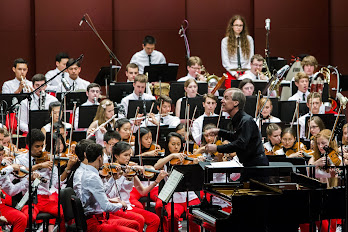1. Apprenticeship in the Classroom
Students can be brutal to one another in school and also outside school. James Gee talks about this as "...being apprenticed to a social group" which in effect is the shaping of what we believe, accept and reject. I talk about this in "Pedagogy and Education for Life" and and offer some examples of how this occurs in everyday school life. Barbara Rogoff takes the apprenticeship metaphor further by arguing that students are effectively apprenticed into thinking in quite specific ways.
Of course, while students have an impact on one another, the teacher also has an important role in leading these young apprentices into life too. The words and actions of teachers matter! If we teach, we inevitably signal to our students what we see as appropriate, the roles in life that are possible, important and valuable.
The things teachers sanction in classroom discourse as appropriate and valuable, are important. The teacher's role is not to try to be liked by reflecting the values, habits and hopes of the students. Rather we need to shape attitudes by creating frameworks for classroom life, that encourage and create predictable behaviour and outcomes [see Chapter 5 of 'Pedagogy and Education for Life' for more details].
2. The Role of Guided Participation
If a teacher hopes to have a positive influence on their students they must understand the perspectives of the students, and in turn, students need to understand those of their teacher. Bruner saw this as a type of 'exchange' taking place, helping both to understand one another. As we observe our students holding unhelpful views of the world, or engaging in practices that are problematic, we need to guide them into new ways of seeing and acting on the world. Vygotsky, Bruner, Rogoff and others all suggest that as we create positive communities in classrooms, it is possible to exchange meanings and help students to grow. This in turn, will lead to common goals and pursuits.
3. Orchestrating Community Life
Bourdieu's work has been particularly helpful in enabling teachers to grasp how teachers and schools can influence students positively for "the Good". He used the concept of "Habitus" to explain how in our world we relate to one another in a collective way, with accepted practices, perceptions, action and so on. These practices in turn shape our view of the world, leading to the valuing of specific things, desires, clothing and habits over others. Families and institutions also do this, but friendship groups are powerful. But classroom communities also matter and should have an impact on school life.
Teachers have a critical role to monitor and intervene if necessary if we observe practices that are not helpful to student well being, as well as classroom and community life. I offer a number of vignettes in my book to illustrate how practices inside and outside school classrooms can at times be problematic and in need of intervention. Let me share a few of these.
4. Influencing and Negotiating Changes in Community Life
Within any school or educational institution you will be able to identify practices within the school community that are unhelpful. The first step is to know your students well enough to identify them. For example, in my book I describe a practice within a College where I was Master, and how tricky it was to change. It involved a form of ritualistic behaviour known as 'Basining'. It was seen as funny by many young males to drag someone into the male bathroom on their birthday, when they'd been seen as doing something 'dumb', or simply for fun. They would hold them down and splash water all over them, in spite of any protestations. Men and women! This had to stop!
Changing such 'secular liturgies' (as James Smith calls them), can shape how students see community life, and what is required to be accepted by others. In our schools we will observe many examples. Some are as trivial as the clothes or shoes students wear, or perhaps the things they value most, music, personal interests and so on. Others include rejecting someone who doesn't 'fit in' (code for who 'likes the things we do', or 'dresses like us' etc), or in some cases, removing threats to the person who seems to 'rule' the group.
5. Is Influencing Community life Possible and Feasible?
Some teachers will respond to my comments by saying, "this isn't possible", "I have enough to do just teaching", "that's the parents' job not mine". I can understand these responses, but in reality to be a teacher is more than just presenting knowledge and teaching subject skills and content. Such responses ignore the imperative of any faith-based school to "nurture, inspire, form and influence for the good, the children God gives us" ('Pedagogy and Education life', Cairney, p.13).
Bryan Cowling points to worrying inconsistencies in how schools articulate key goals. He concluded that the "weight" of language and emphasis of many Christian schools is "lifelong learning, citizenship, tradition, academic performance, community, curriculum, standards, quality, self esteem, heritage, culture, sport, well-being, justice and innovation" (Cowling, "The Context of Anglican Education", pp 25-40; Cairney et al., 'New Perspectives in Anglican Education', pp 77-88).
These might sound good, but notice what is missing in relation to faith and spiritual maturity.
6. Summing Up
The task of religious schools is difficult. Of course, if the primary aim is to keep students and their parents happy by 'guaranteeing' greater success in life, then the task is easier. But if the faith-based school sees worldly success as important but not the key driver, the task is harder. In short, we must not allow ambitious parents - who place more value on worldly success than deep faith in our God and eternal life - to shape our school life, we have failed. Apprenticing our students into Christian School communities requires much more.






No comments:
Post a Comment